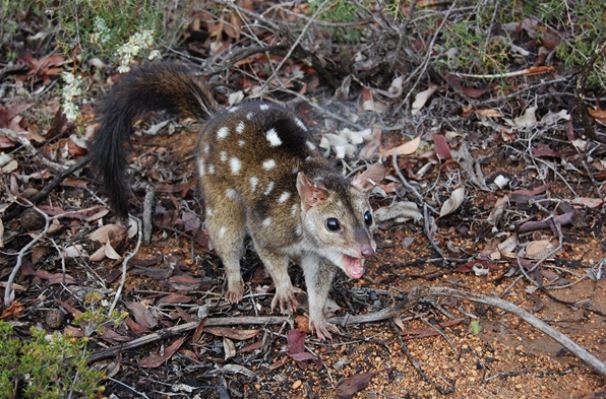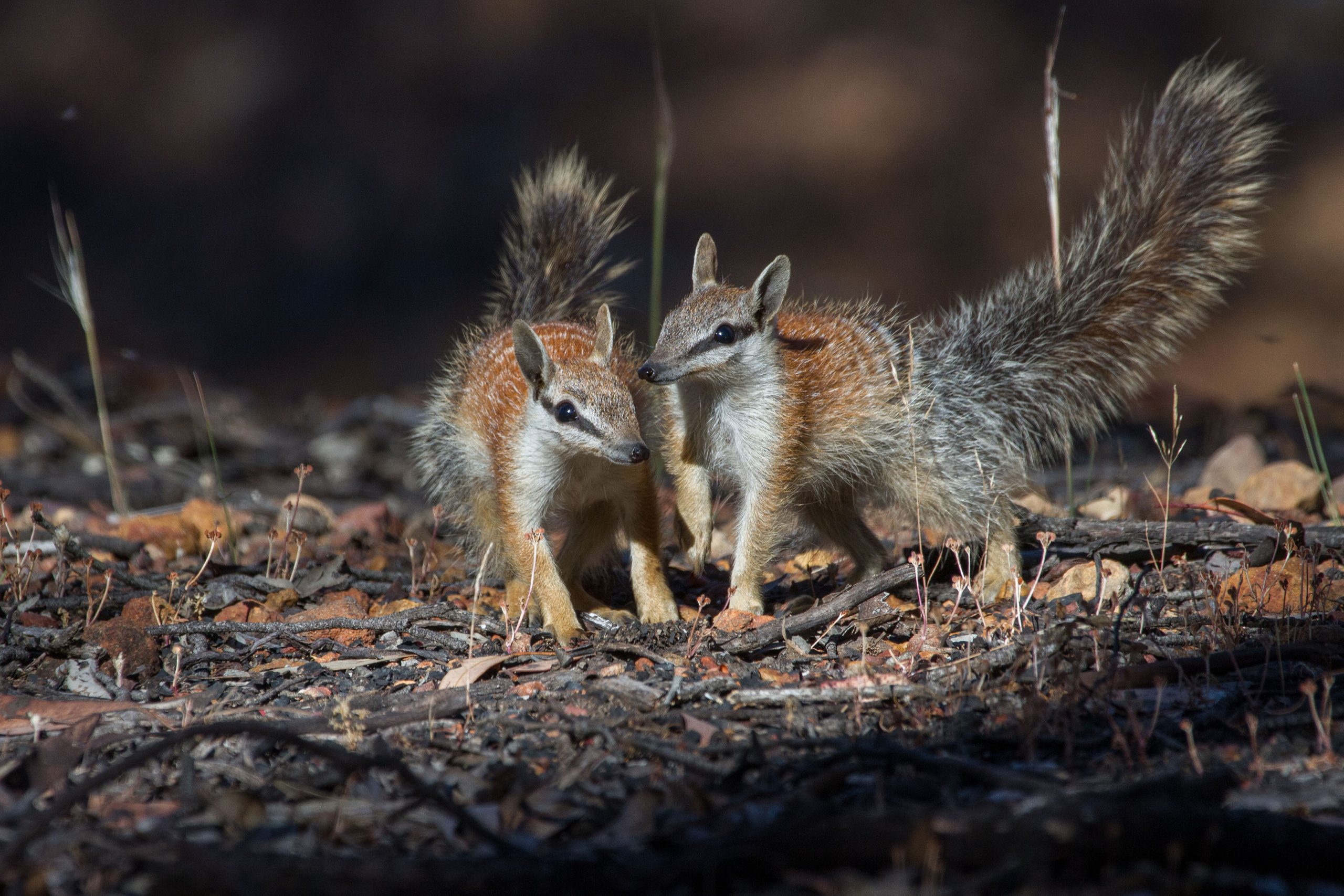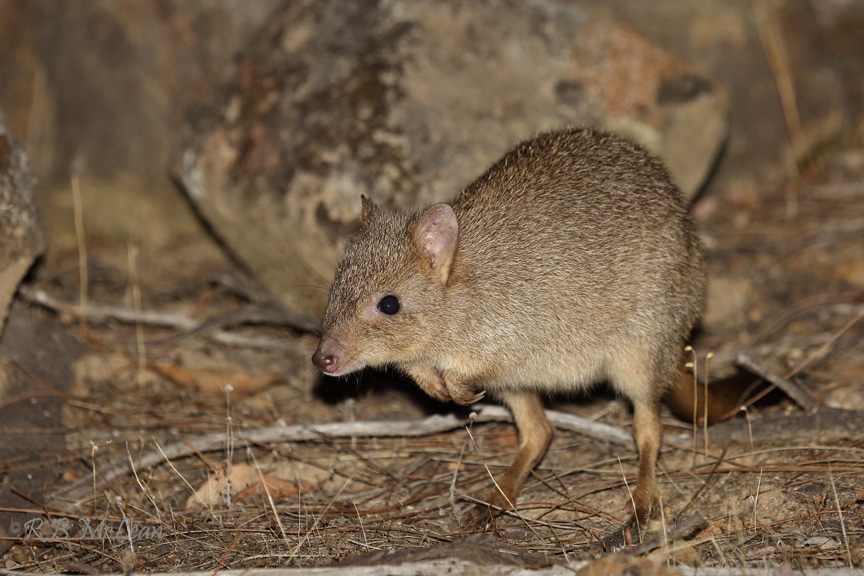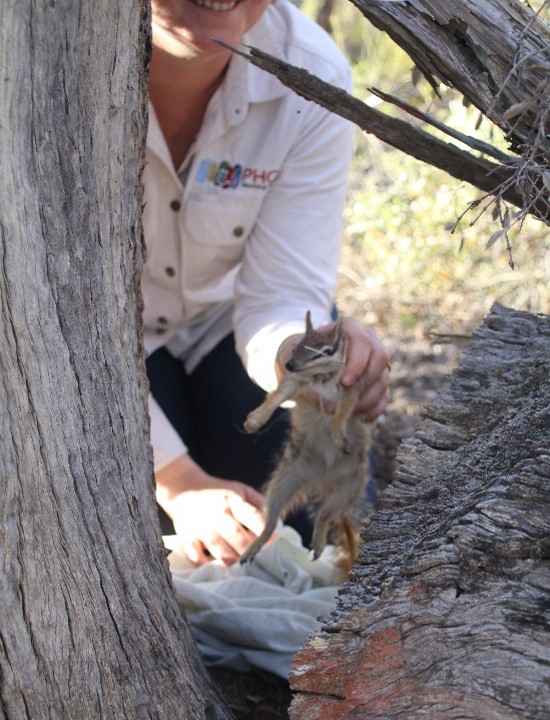Supporting the following Objectives
Numbat Neighbourhood
Supporting people to protect the vulnerable Noombat wioo (Numbat, Myrmecobius fasciatus) in the wild

Long Term Goal
By 2050 Threatened Species populations of the Numbat and associated species such as Woylie, Chuditch and Black-forest Cockatoos species are conserved and are more resilient across WA
Regional Land Partnerships (Australian Government) Outcomes
Primary Outcome:
By 2023, the trajectory of species targeted under the Threatened Species Strategy, and other EPBC Act priority species, is stabilised or improved.
- Primary Investment Priority: Myrmecobius fasciatus (Numbat)
- Secondary Investment Priorities: Bettongia penicillata (Woylie) Dasyurus geoffroii (Chuditch)
- Additional: Matchstick Banksia, Red-tailed Phascogale and Malleefowl
Noombat wioo (Numbat: Myrmecobius fasciatus) is a small unique marsupial found only in Australia. Numbats are closely related to the extinct Tasmanian Tiger and while they used to cover an area from south-western NSW to south-west Western Australia, they are now rarer than giant pandas, with only ~1000 left in the wild.
Numbats are culturally significant to Noongar people and the fauna emblem of WA.
Numbats have suffered significant decline in numbers since European settlement due to threats e.g. predation by ferals, habitat loss & fragmentation, disease, climate change and inappropriate fire regimes. It is listed as endangered by the IUCN and EPBC Act.
One of the jewels of the Peel-Harvey is Dryandra Woodlands, home to one of only two naturally occurring Numbat populations left in the wild.
Our Numbat Neighbourhood project will help address the decline and improve the trajectory of Numbats in the Peel-Harvey Catchment as well as that of secondary species, Woylie (Bettongia penicillata) and Chuditch (Dasyurus geoffroii) and other species by implementing actions from recovery plans including:
- Feral animal control in targeted habitat
- Targeted onground works to reduce threats to threatened species
- Weed control in targeted habitat over multiple seasons
- Follow-up fauna surveys
- Follow-up flora surveys
- Maintaining feral-free enclosures
- Community and stakeholder engagement and communication activities
For more detail on the project, please view the project summary here.

Chuditch
Dasyurus geoffroii
Photo: Brent Johnson

Numbat
Myrmecobius fasciatus
Photo: John Lawson

Woylie
Bettongia penicillata
Photo: Roy McLean

Key Threats
- Predation by feral cats and foxes
- Habitat fragmentation and loss
- Disturbance
- Inappropriate fire regimes
- Disease
- Climate change
- Loss of cultural knowledge and values
Management Actions
Biophysical
- Feral Animal Control
- Feral animal proof fencing to create safe havens
- Fencing for habitat protection Revegetation and restoration
- Disease management
- Breeding and translocation projects
- Understanding fire regimes
Non Biophysical
- Establish Noongar consultation, engagement & partnerships
- Community training events
- Knowledge extension workshops/events
- Media and promotions
- Literature review of Conservation Advice and Recovery Plans
- Develop network of experts
- Long term monitoring and evaluation projects
- Establish data storage and database
- Education programs for schools

Working Together
The PHCC is delivering the Numbat Neighbourhood project in collaboration with the following:
- Department of Biodiversity, Conservation and Attractions (DBCA)
- Department of Primary Industries and Regional Development (DPIRD)
- Shires of Wandering, Williams, Cuballing and Boddington
- Hotham-Williams Community (schools, landholders)
- WA Feral at Working Group
- Project Numbat
- Numbat Recovery Team
- Perth Zoo
- Noongar Community
- Farming Community
- Newmont
Project outcomes
Changes in Asset (by 2023) Actions for Climate Change are embedded into the Numbat, Woylie and Chuditch Recovery PlansHabitat for the Numbat, Woylie and Chuditch is maintained or improved by 650ha through the protection of natural bushland and revegetation
Monitoring and Evaluation
An effective monitoring and evaluation framework is being used to ensure the Project delivers on its outcomes. Our PHCC project logic provided the framework for the design, delivery, review and evaluation of this project. Numbat Neighbourhood focusses on Dryandra Woodland and the surrounding private properties. All activities have been developed to reduce threats and improve habitat for the Numbat and associated Threatened Species to reach the 5 year and longer term Conservation Advice and Recovery Plan outcomes. Management Actions (outputs) are detailed on the graph below, with progress in delivery up to June 30, 2021 showing that we are on target to meet our targets, as defined in our Agreement with the Australian Government.Numbat Neighbourhood Project delivery to June 30 2021
The trajectory of Numbats in the wild is improved through a subsidised breeding program
The threat of predation to Numbat, Chuditch and Woylie populations is reduced through 6,000ha of feral animal control, 60ha of weed control
Practice and Attitude Change (by 2023)
Local Noongar Elders and Traditional Owners are involved with the planning and delivery of activities to improve cultural knowledge of Numbat, Woylie and Chuditch values to the Noongar people as per the EPBC Act
A minimum of 180 members of the community (inc. landholders) have an improved understanding of the principles and practices for reducing threats, restoration and conservation activities leading to management actions on private landholdings to protect the Numbat, Woylie and Chuditch
There is an increased awareness and participation in the conservation of the Numbat with a minimum of 89 private landholders having undertaken training and onground actions to reduce threats and protect habitat for the Numbat, Woylie and Chuditch

